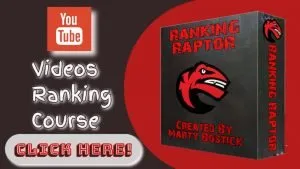As you operate your online business, you will begin to find that there are interaction points with people and customers that would be enhanced or better facilitated through the use of automated messages. These automated communications are often categorized in business as I have listed them below.
· Acknowledgement Messages
o Signup Acknowledgements
o Trouble Ticket Acknowledgements
o Comment and Inquiry Acknowledgements
· Marketing/Advertising Campaign Messages
o Series of Promotional Messages for Your Products and Services
o Newsletters
· Training Messages
o How to Download the Software
o How to Use the Product
o How to Use the Site, etc.
· Order Fulfillment Messages
o Order Fulfillment Notice
o Invoice
o Product Shipment Notices
o Follow on Satisfaction Surveys
Probably the most prevalent message type in the acknowledgement classification would be that of creating an automated response “Welcome/Thanks for Subscribing” message when someone signs up or subscribes to “follow” you to receive future content from you. They have probably filled out a form you’ve created on your website for this purpose or one of the social media platforms you participate in has given them the opportunity to follow you through some form of button.
For example, on Pinterest, you do not automatically receive an acknowledgement message that you just followed someone however you can choose to create “Direct Message” responses when someone follows you that allow you to attach a brief marketing message of some sort that they can read. In this instance, Pinterest itself will send the acknowledgement message you have created to that person’s e-mail address. The Direct Message has a current length limitation of 140 characters so it does not allow you to do much, but it can get someone to click on a link back to your website so that you can capture their e-mail address and begin a more comprehensive set of interactions and build the relationship further.
Alternatively, on Google+ if you follow someone, they will receive an automated message in their e-mail to let them know they have just been followed but you won’t receive an acknowledgement of the following activity. Yet, if the person you followed follows you back, you will then receive an acknowledgement message that you are being followed. There is currently not much to work with here to build a bridge for e-mail interactions between you and a follower or customer prospect so you will have to use other Google+ facilities to get them to your website where you can capture their e-mail information.
The point I am trying to get to with the above narratives is that the key to effectively pulling people in to your world so that you can communicate with them professionally through the e-mail systems you have created is something you need to strategize, particularly if you are building the initial relationships with them through social media channels that protect direct access to a person’s e-mail address within their systems. And it is understandable from their perspective that they do so by the way, if they start sharing e-mail addresses of their subscribers they will start losing followers by the thousands due to privacy concerns and there may be a few legal boundaries they have to remain within to protect their customers’ confidentiality as well.
Strategy wise, the best place to capture a person’s e-mail address is if you can create a form of some sort (or e-mail capture window) on your website. Use this website location then to funnel their e-mail address into your “E-mail Messaging Platform” of choice where they then go through whatever automatic e-mail responses, campaigns, training messages programs, etc. that you have setup for them based on the category of correspondence you have received. Your focus on your other platforms and online content you create therefore, is to try to get them to your website where hopefully, they choose to connect with you further.
In some instances, who you are, what they are hoping to get from you and what you are providing will be enough to get them to sign up. In other instances, you may need to offer some enticement to get their e-mail information such as a free book, a contest you are running, a prize draw, etc. This is all part of the strategizing you will need to do to try to make this happen. But once you do get their attention to this degree, you will find that using e-mail in your business is an absolutely great way to build longer term rapport with others and to show the professionalism implemented into your business. And all this helps you to grow.






